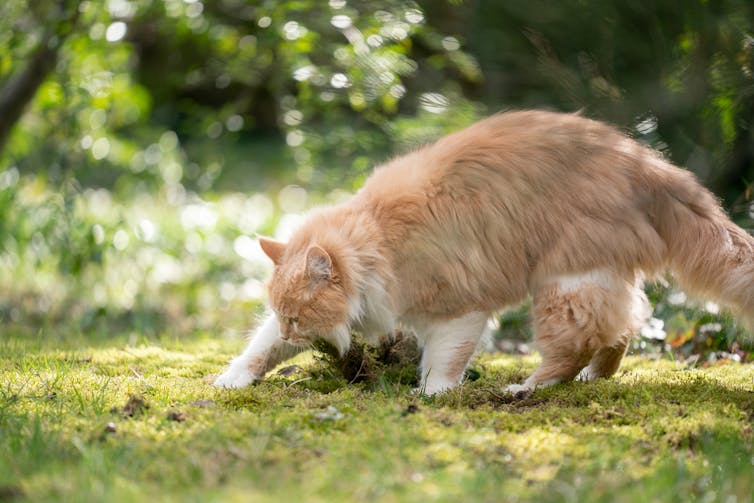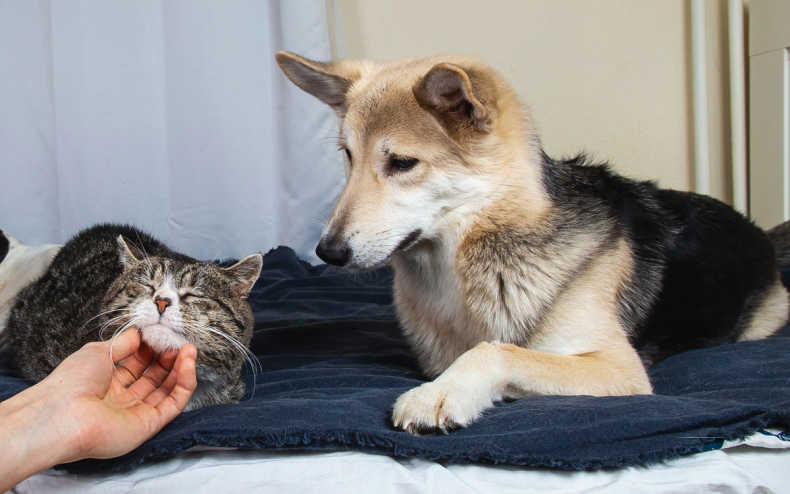Top Cat Grooming Tips Every Owner Should Know
Table of Contents
Cats are often hailed as fastidious creatures, yet their innate self-cleaning rituals cannot replace the attentive care of a dedicated owner. Maintaining healthy fur, trimmed claws, and pristine ears requires more than instinct alone it calls for intentional, routine practices grounded in knowledge. Understanding Cat grooming tips is the cornerstone of elevating a feline’s well-being, preventing health complications, and ensuring their elegance remains undiminished. For further guidance on holistic pet wellness, explore the comprehensive resource Essential Cat Care Practices, which details every facet of feline stewardship.
Why Grooming Is a Cornerstone of Feline Wellness
Unlike dogs, cats are notoriously independent, but their self-reliance often masks hidden needs. Neglected coats can mat, nails may curl into paw pads, and parasites may linger unseen. Grooming is therefore not merely cosmetic it is preventive healthcare.
Regular maintenance strengthens the bond between pet and owner. The tactile interaction of brushing or nail trimming fosters trust and calms anxiety. A cat that is consistently cared for will often display improved temperament, heightened playfulness, and even stronger immunity thanks to reduced stress.
Cat Grooming Tips for Maintaining a Radiant Coat
A feline’s coat is its natural armor, shielding against temperature shifts and skin irritants. Yet, without structured care, it becomes vulnerable to tangles, excess shedding, and pest infestation.
Brushing is the foundation of coat health. Long-haired breeds thrive with daily combing, while short-haired companions benefit from two to three sessions weekly. Specialized tools, such as stainless steel slicker brushes and de-shedding rakes, prevent matting and minimize hairballs.
Bathing, though often dreaded by cats, is sometimes necessary. Using lukewarm water and feline-specific shampoos helps preserve natural oils while cleansing away dirt. Owners should ensure the cat is thoroughly dried afterward, as damp fur may trigger chills or fungal infections.
Nutrition also plays an understated role in coat quality. A diet abundant in omega-3 and omega-6 fatty acids supports glossy, dense fur. Supplements derived from fish oil or flaxseed may be beneficial for cats prone to dandruff or excessive shedding.
Cat Grooming Tips for Oral and Dental Hygiene
Dental health is frequently overlooked, yet it is pivotal to a cat’s longevity. Plaque accumulation hardens into tartar, leading to gingivitis and eventual tooth loss. Even worse, untreated oral disease can spread bacteria to the heart or kidneys.
Brushing a cat’s teeth may sound daunting, but with patience and consistency it becomes routine. Feline toothbrushes and enzymatic toothpaste are specially formulated to be safe and palatable. Begin slowly by allowing the cat to taste the toothpaste, then gradually introduce brushing motions.
Dental chews, water additives, and professional veterinary cleanings complement at-home care. Monitoring for signs such as foul breath, drooling, or difficulty eating ensures issues are addressed promptly.
Cat Grooming Tips for Ear and Eye Care
Ears are susceptible to wax buildup, mites, and infections. Regular checks help prevent discomfort and potential hearing loss. A gentle wipe with cotton pads dampened by veterinarian-approved solution clears debris without risking damage to the eardrum. Q-tips should be strictly avoided, as they can push wax deeper or injure the ear canal.
Eyes, meanwhile, demand vigilance for discharge, cloudiness, or excessive tearing. Some breeds, particularly flat-faced ones like Persians, are prone to tear staining. Daily wiping with a soft cloth or sterile wipes keeps the area clean. Persistent redness or swelling may indicate conjunctivitis, requiring veterinary attention.
Grooming Beyond Basics: Enhancing Comfort and Bond
Grooming transcends physical maintenance—it is a ritual of connection. Many cats initially resist, yet gentle persistence transforms grooming into a bonding experience. Owners should approach sessions with patience, rewarding calm behavior with treats and affection.
Consistency is key. Short, frequent grooming intervals are less intimidating than infrequent, prolonged sessions. Over time, cats begin to associate grooming with relaxation rather than stress.
Recommended Routine Checklist
To simplify daily care, owners can adhere to the following structured routine:
-
Brush the coat to reduce shedding and prevent matting.
-
Inspect paws and trim nails if needed.
-
Check ears for debris or odor and clean gently.
-
Wipe eyes to remove discharge.
-
Brush teeth with enzymatic feline toothpaste.
-
Provide a quick health scan for lumps, cuts, or parasites.
By following this sequence, owners ensure no aspect of their companion’s well-being is overlooked.
Seasonal Grooming Considerations
Different times of year require adjustments to grooming routines. During shedding seasons in spring and autumn, increased brushing helps manage fur volume and reduces the risk of hairballs. Summer heat calls for careful monitoring of hydration and coat thickness, while winter requires attention to dry skin and cracked paw pads caused by indoor heating systems.
Cats living in humid climates may be more susceptible to fungal skin infections, while those in colder regions face risks of dry, flaky skin. Owners must adapt practices accordingly, tailoring their approach to environmental conditions.
The Psychological Benefits of Grooming
Grooming nurtures not only physical health but also psychological well-being. The calming rhythm of brushing mimics the maternal licking cats receive as kittens, triggering feelings of safety and affection. Cats prone to stress or anxiety often exhibit marked improvement when introduced to consistent grooming rituals.
Moreover, grooming reduces destructive behaviors. Cats that receive ample tactile stimulation through brushing and paw care are less likely to scratch furniture, over-groom themselves, or act aggressively. The practice thus doubles as both preventive healthcare and behavioral therapy.
Professional Grooming and Veterinary Support
Some cats require expertise beyond the capacity of their owners. Professional groomers are trained to handle challenging temperaments and provide specialized services like lion cuts for long-haired breeds. They also spot early signs of dermatological conditions or parasites.
Veterinary input is equally indispensable. Annual or biannual checkups allow professionals to assess teeth, ears, and overall condition with medical precision. Owners should not hesitate to seek guidance when unfamiliar symptoms arise, as timely intervention often prevents severe illness.
Midpoint Insight: Linking Grooming with Lifestyle
Feline grooming should not exist in isolation; it intersects with diet, exercise, and emotional enrichment. Owners who integrate grooming into a holistic lifestyle strategy raise cats that are not only healthier but also more resilient to stressors. Discover more about the interconnection of feline lifestyle and care in our detailed guide Holistic Cat Health Essentials, a valuable companion resource for conscientious owners.
Common Mistakes to Avoid
Despite good intentions, many owners make errors that undermine grooming efforts:
-
Using human shampoos, which strip protective oils and irritate skin.
-
Cutting nails too short, causing pain and bleeding.
-
Neglecting dental hygiene until problems become severe.
-
Ignoring subtle behavioral cues of discomfort during grooming.
-
Over-bathing, which disrupts the coat’s natural oil balance.
Avoiding these missteps ensures grooming becomes a safe, effective practice rather than a source of stress.
Grooming Senior or Special-Needs Cats
Older cats and those with chronic conditions require adjusted grooming approaches. Arthritis, for example, limits mobility, making self-cleaning difficult. Owners must provide extra brushing, nail care, and gentle handling to reduce discomfort.
Cats in their later years, or those recovering from surgery and coping with allergies, benefit from hypoallergenic wipes, medicated shampoos, and modified routines. Compassionate attention to their limitations ensures dignity and comfort in every stage of life.
The Future of Feline Grooming
Advancements in pet care continue to refine grooming practices. From ergonomic brushes that reduce wrist strain to automated nail trimmers with built-in sensors, technology enhances both safety and convenience. Nutritional science also evolves, offering supplements that directly improve coat, skin, and dental health.
As awareness grows, grooming is increasingly viewed not as a luxury but as a fundamental aspect of responsible ownership. This shift ensures that more cats worldwide enjoy longer, healthier, and happier lives.
Every brushstroke, every clipped nail, every gentle ear cleaning reinforces a silent message: the cat is cherished. Grooming is not an obligation but an act of devotion, a ritual that intertwines health with affection. The cat, in turn, responds with trust, companionship, and vitality.
For an in-depth continuation of this journey, including advanced practices tailored to breed-specific needs, refer to our extended article Advanced Cat Grooming Techniques, designed for owners who aspire to mastery in feline care.



